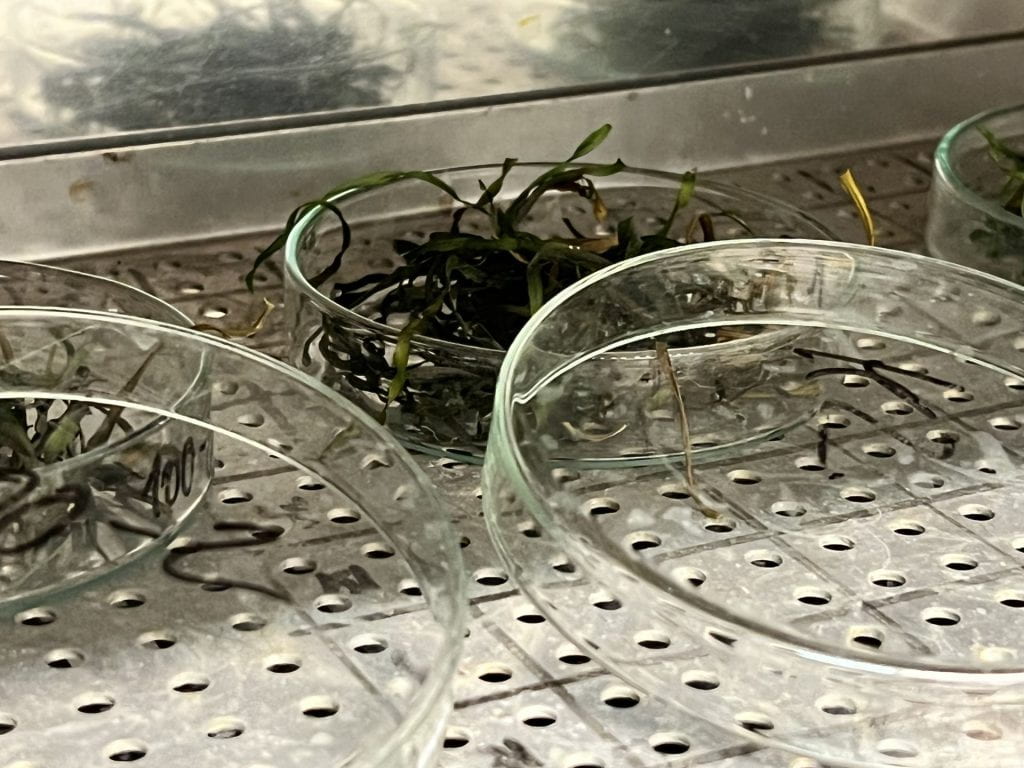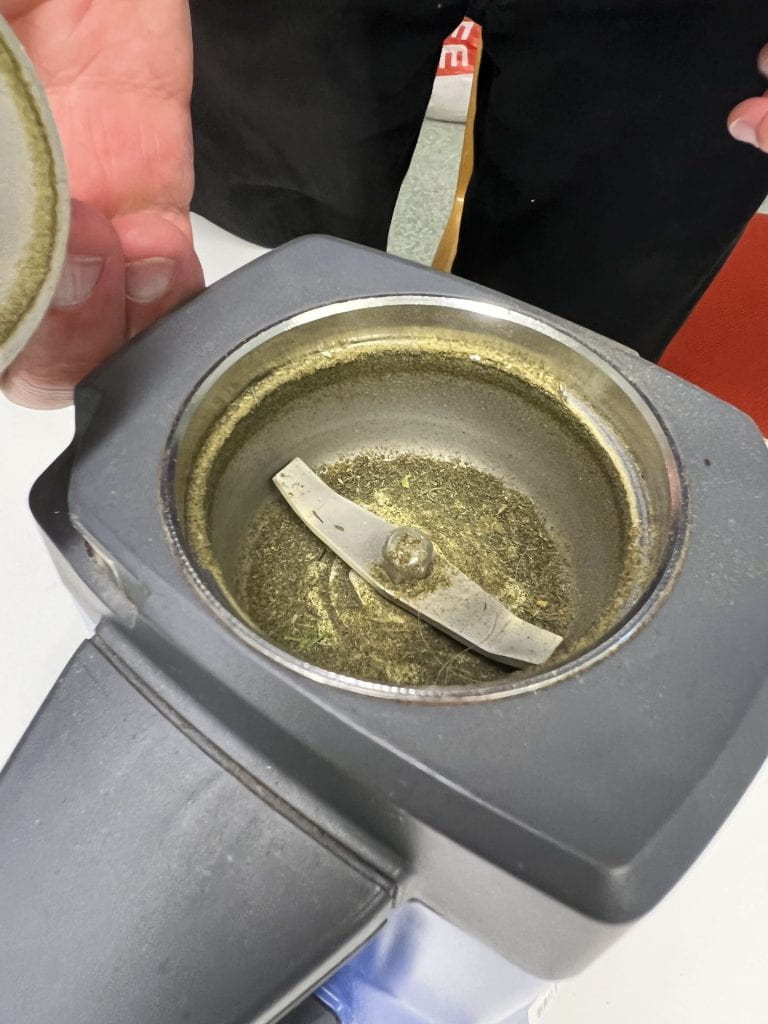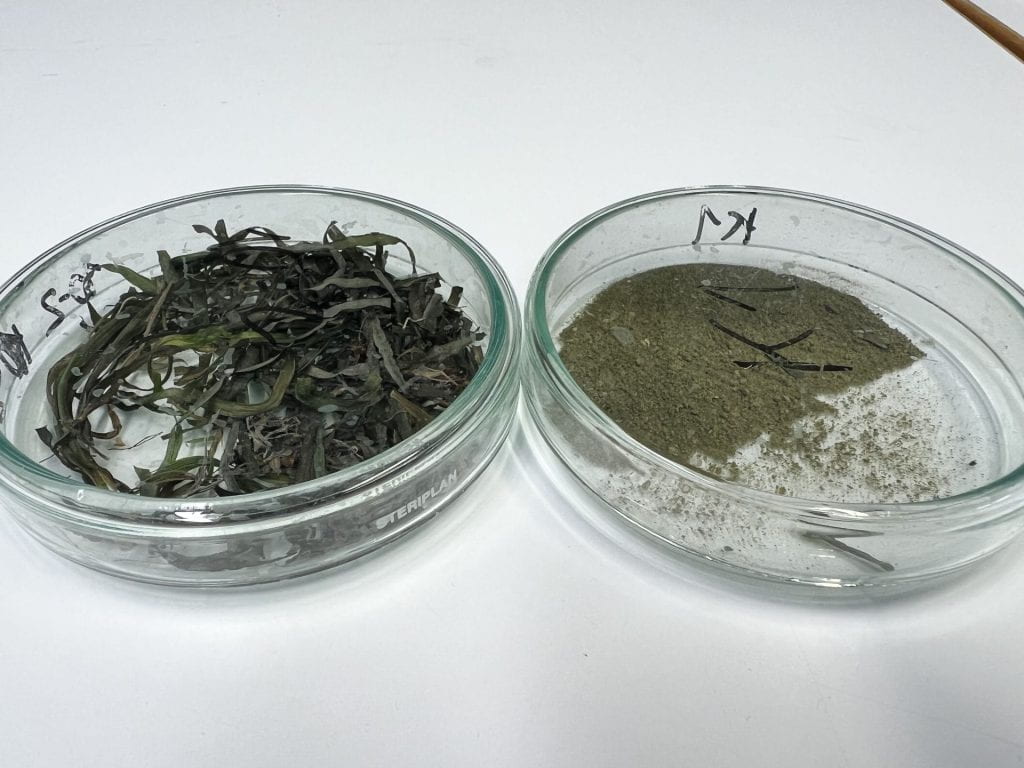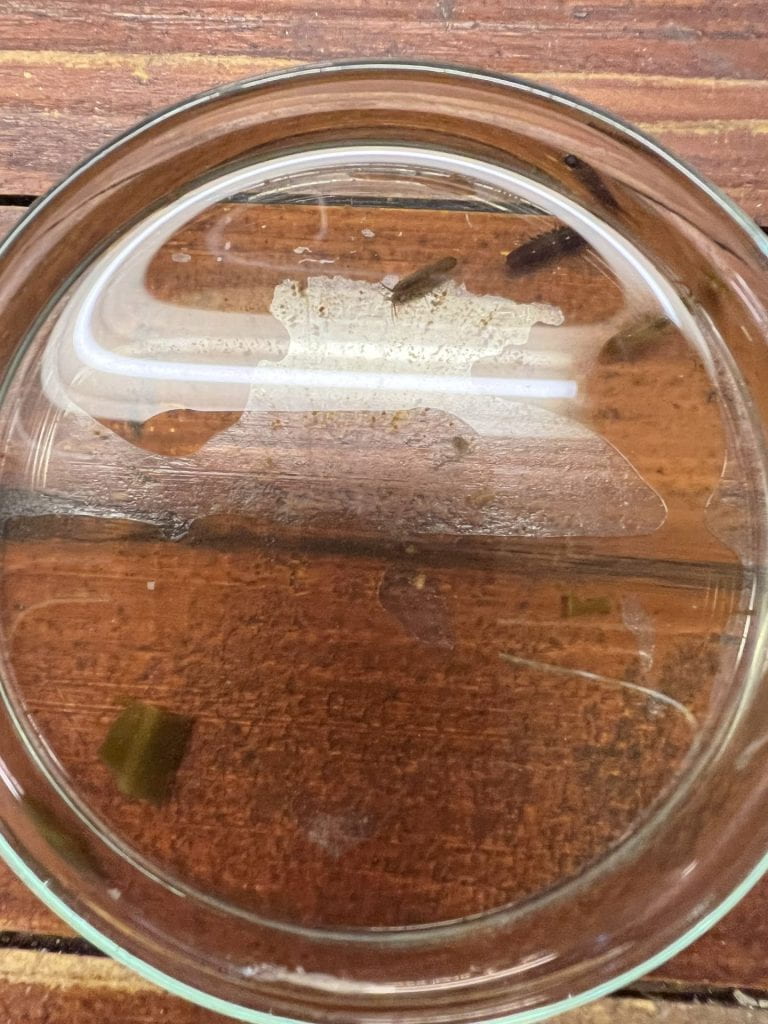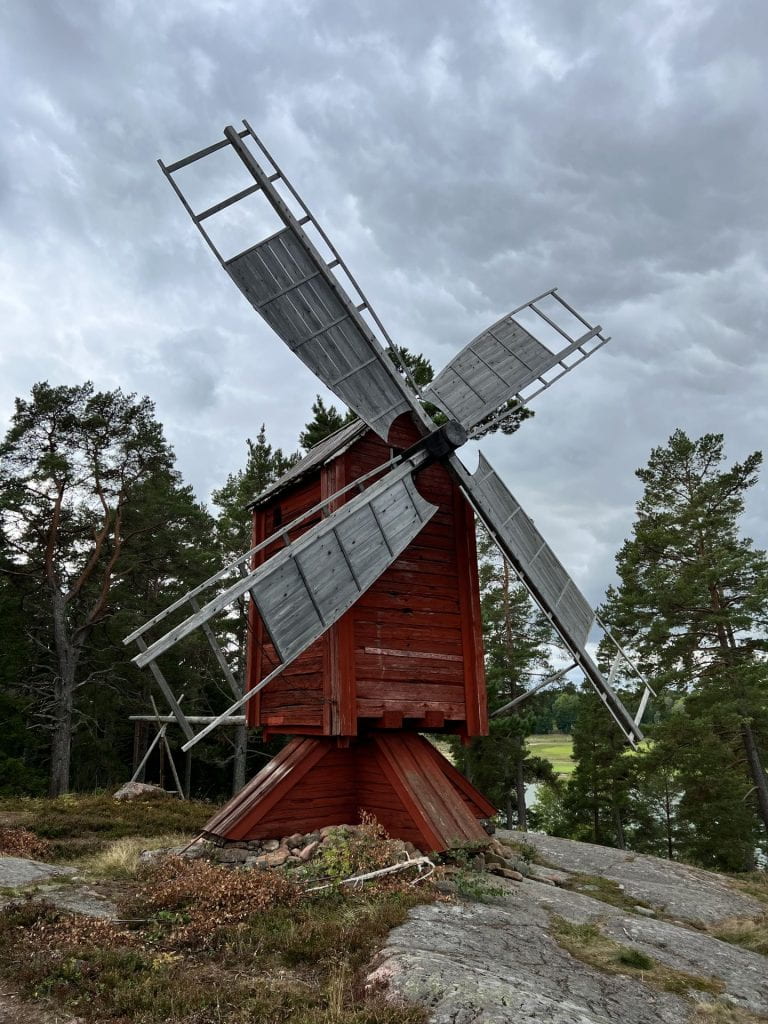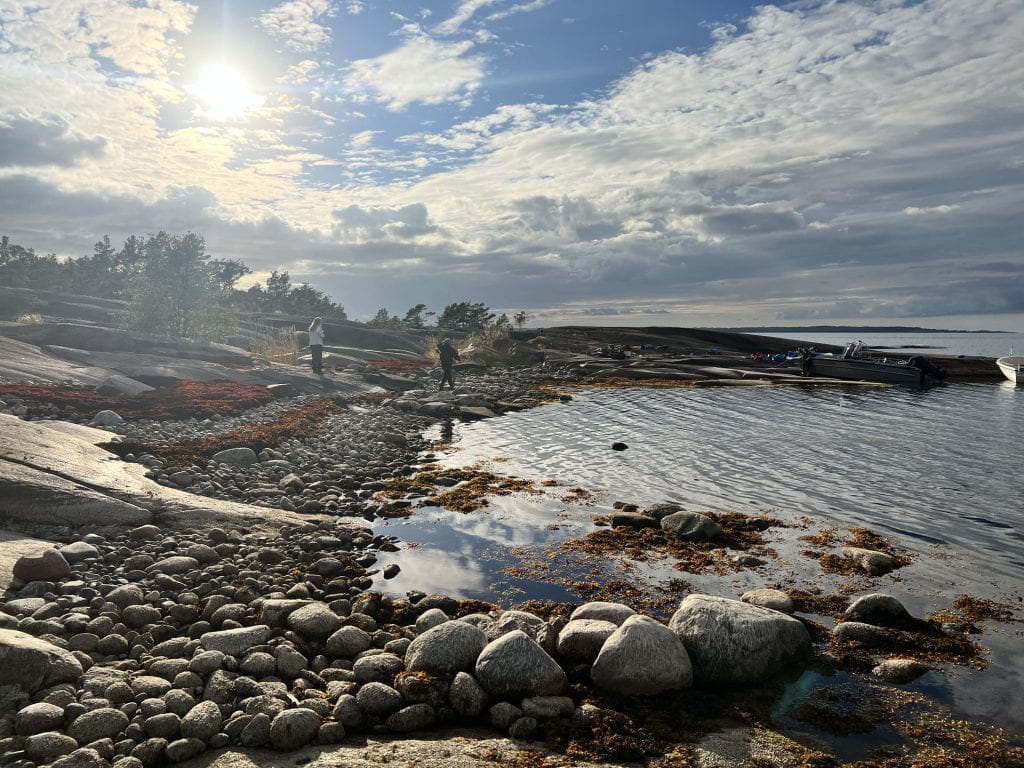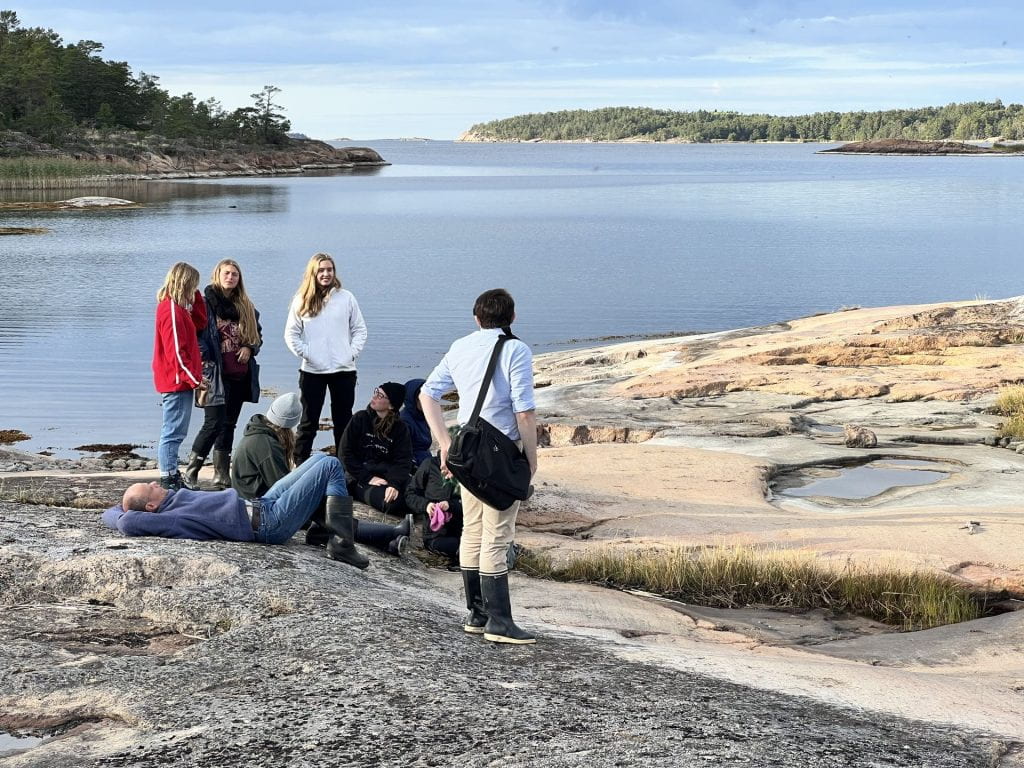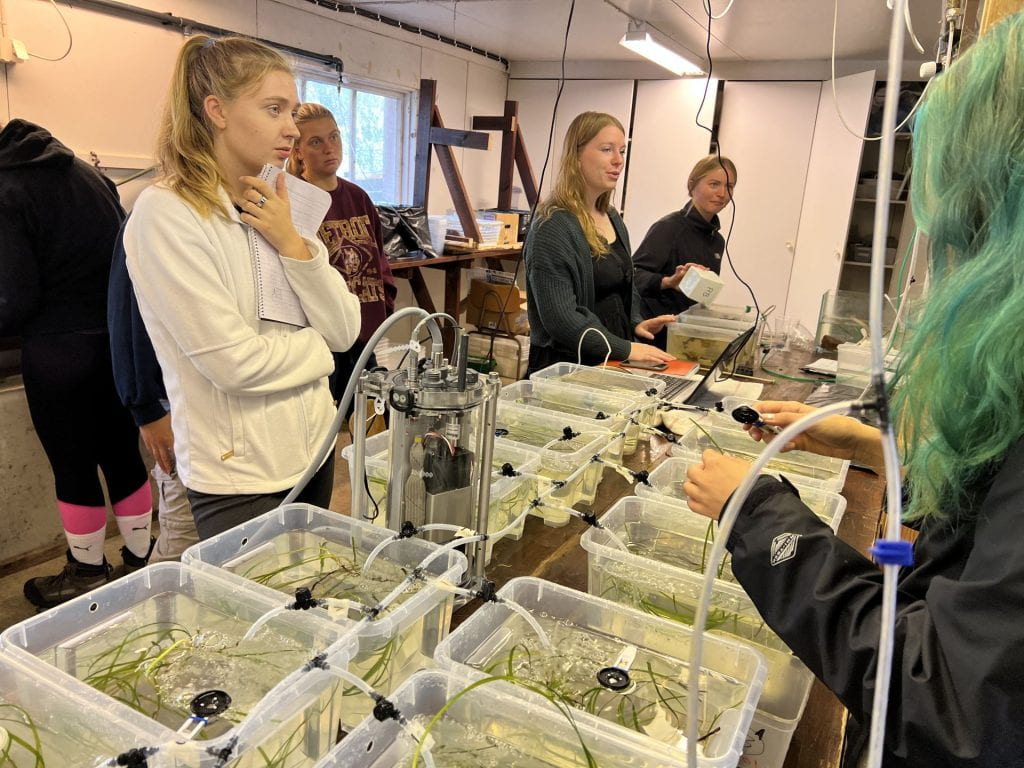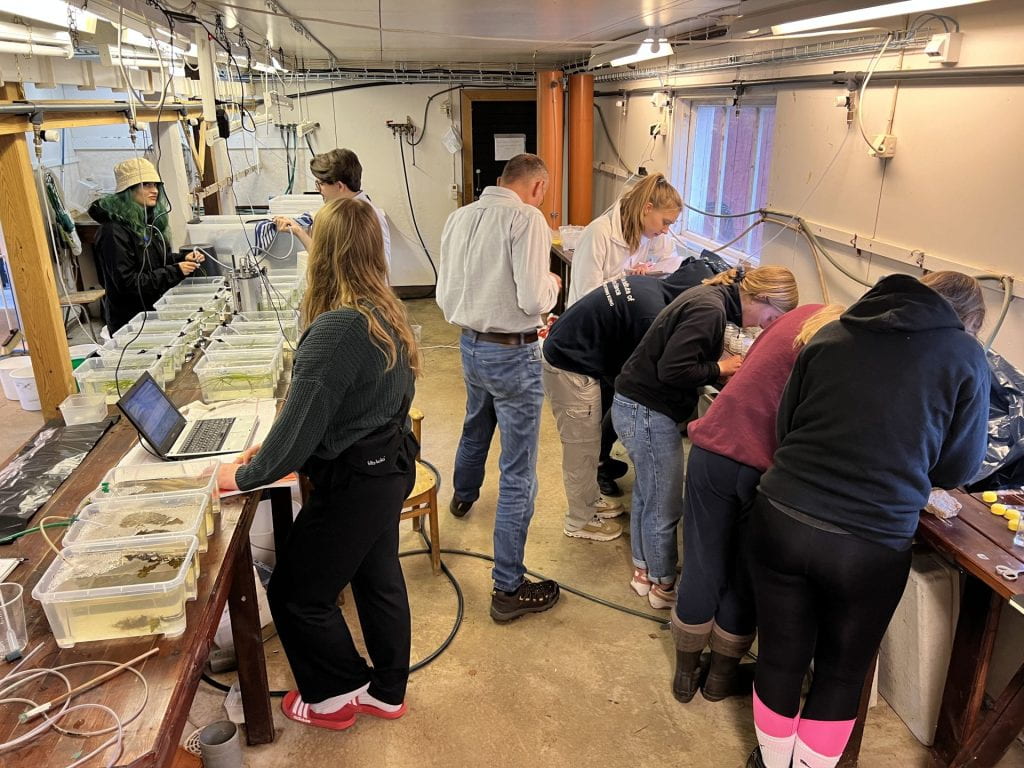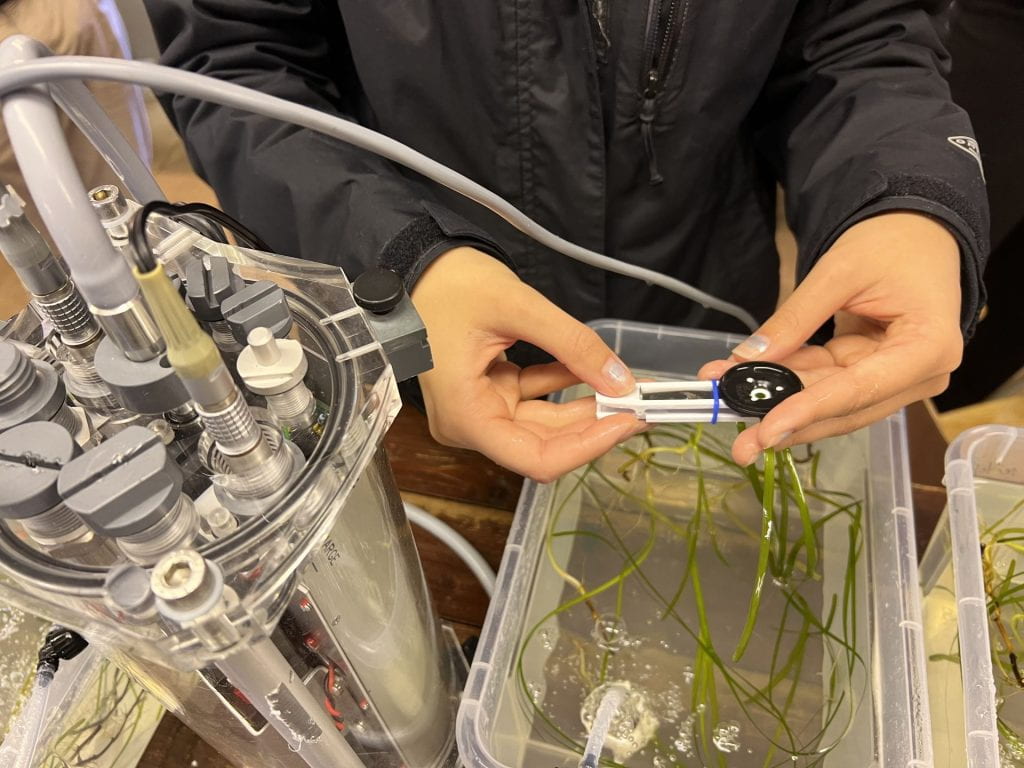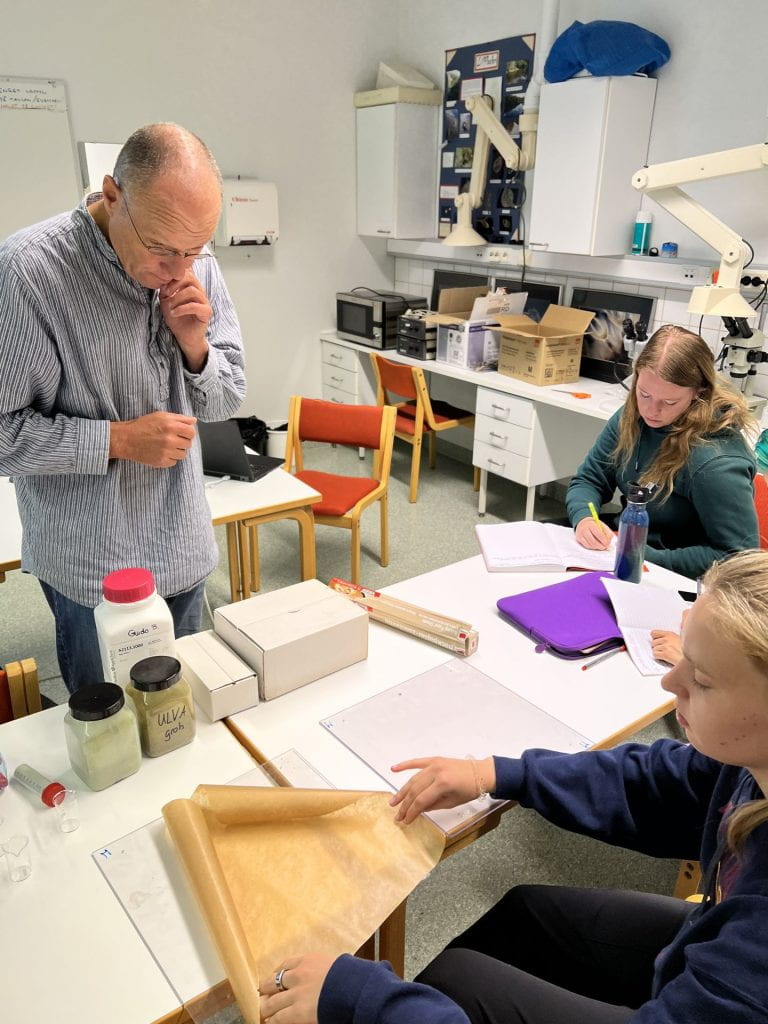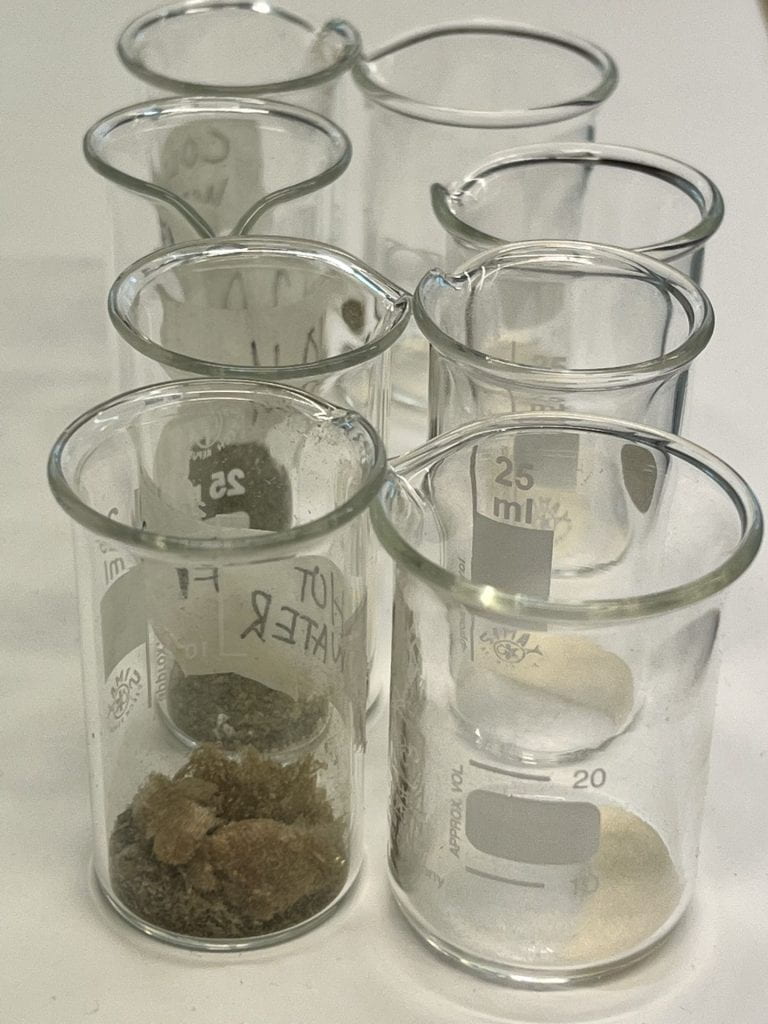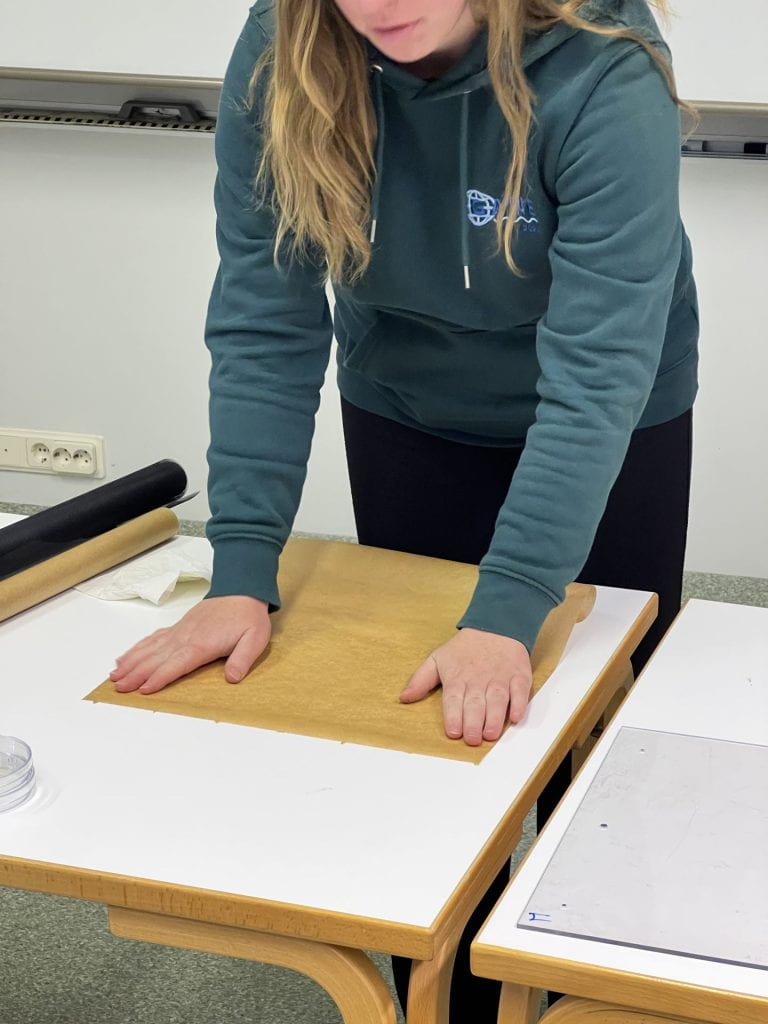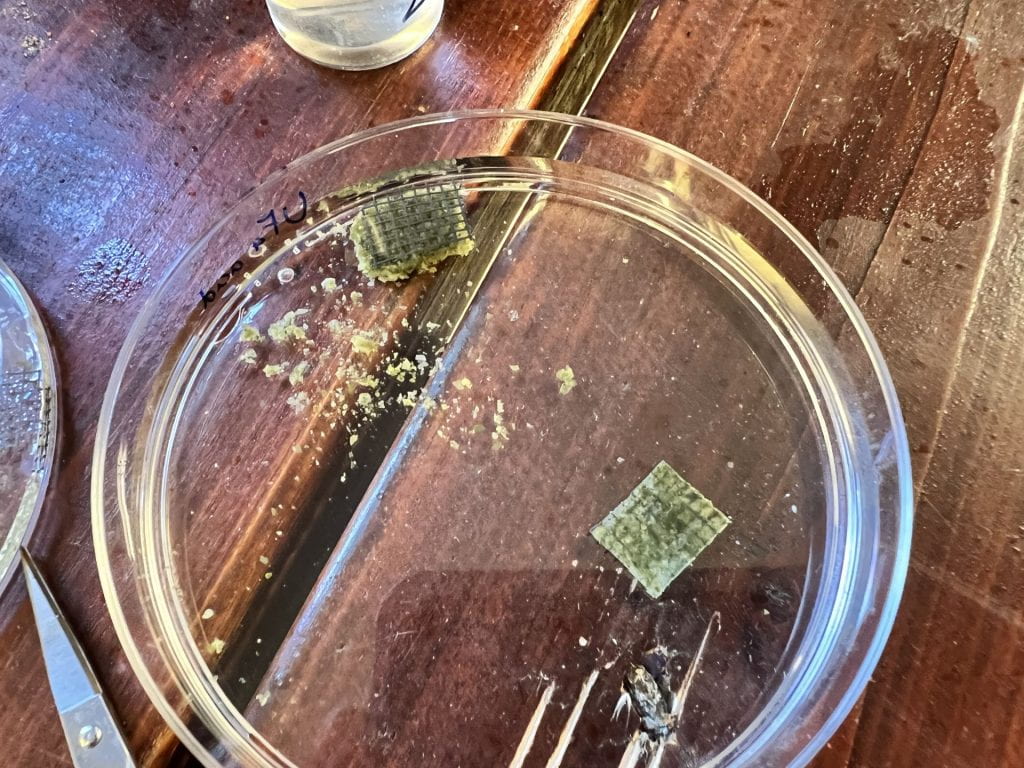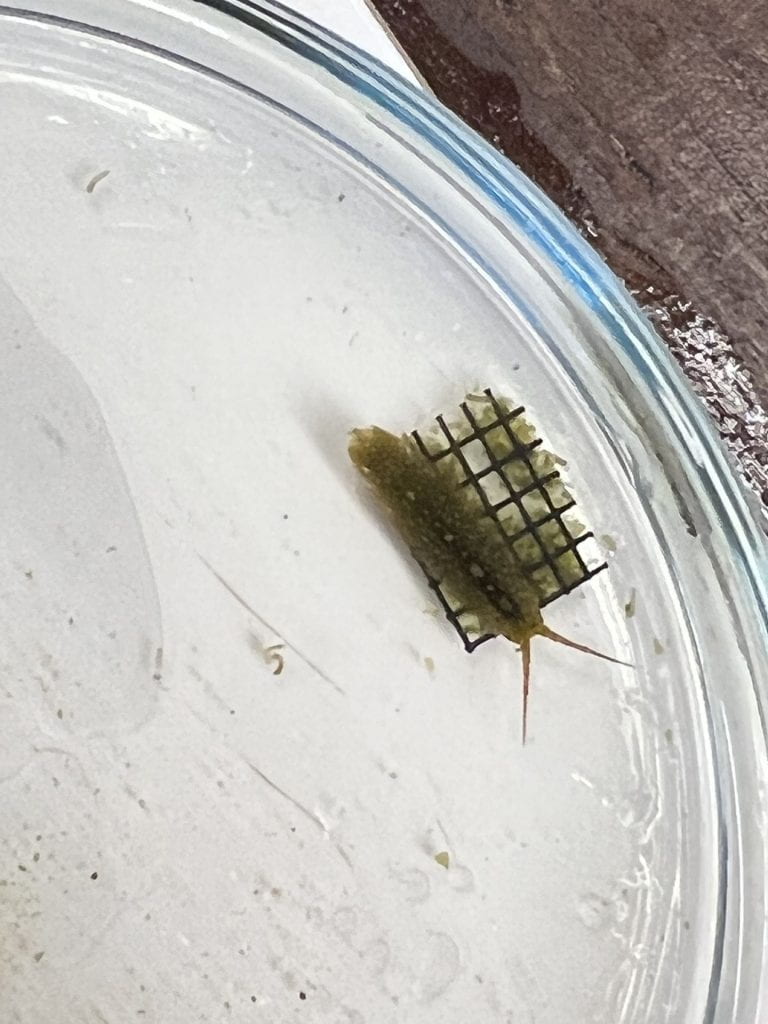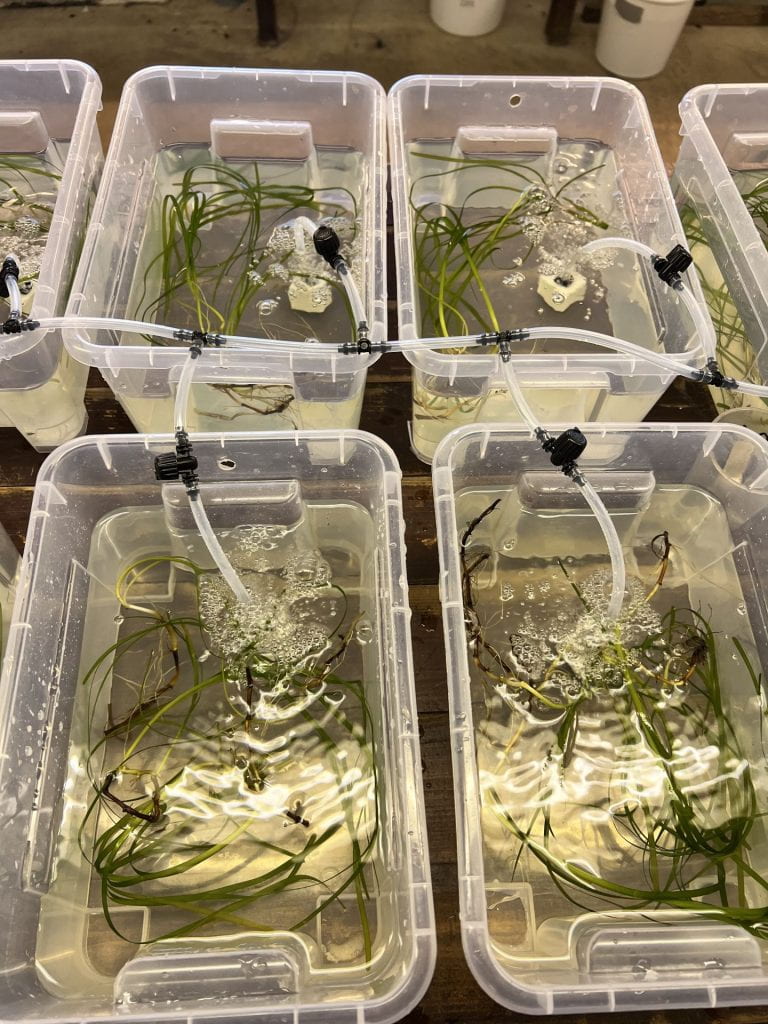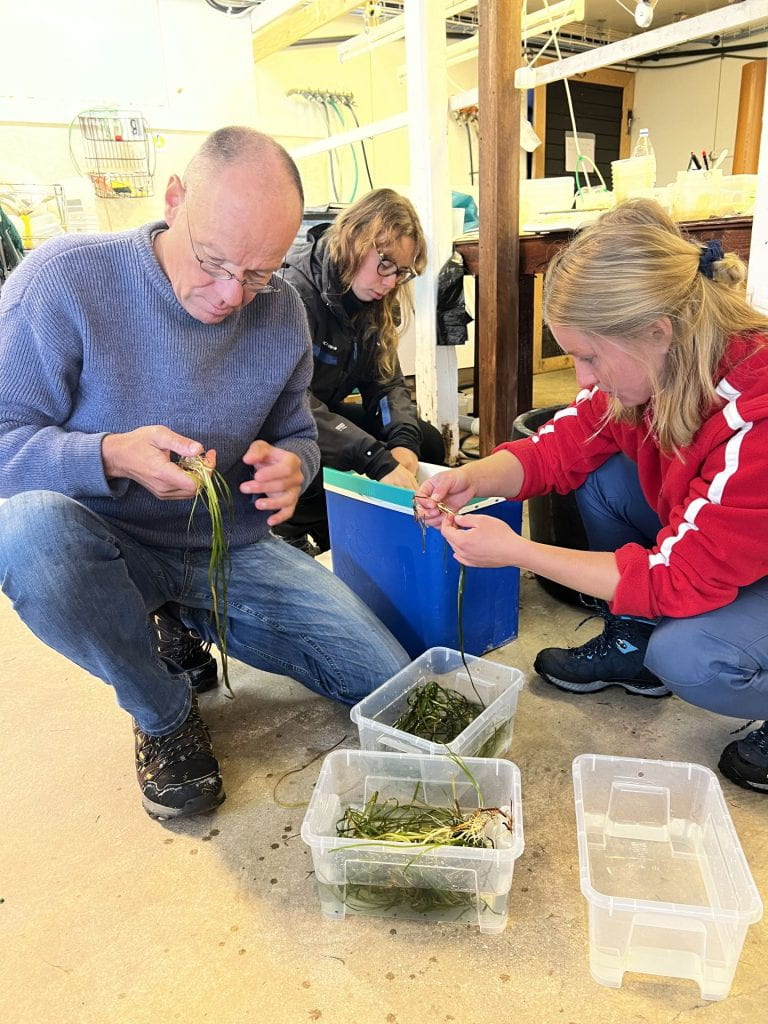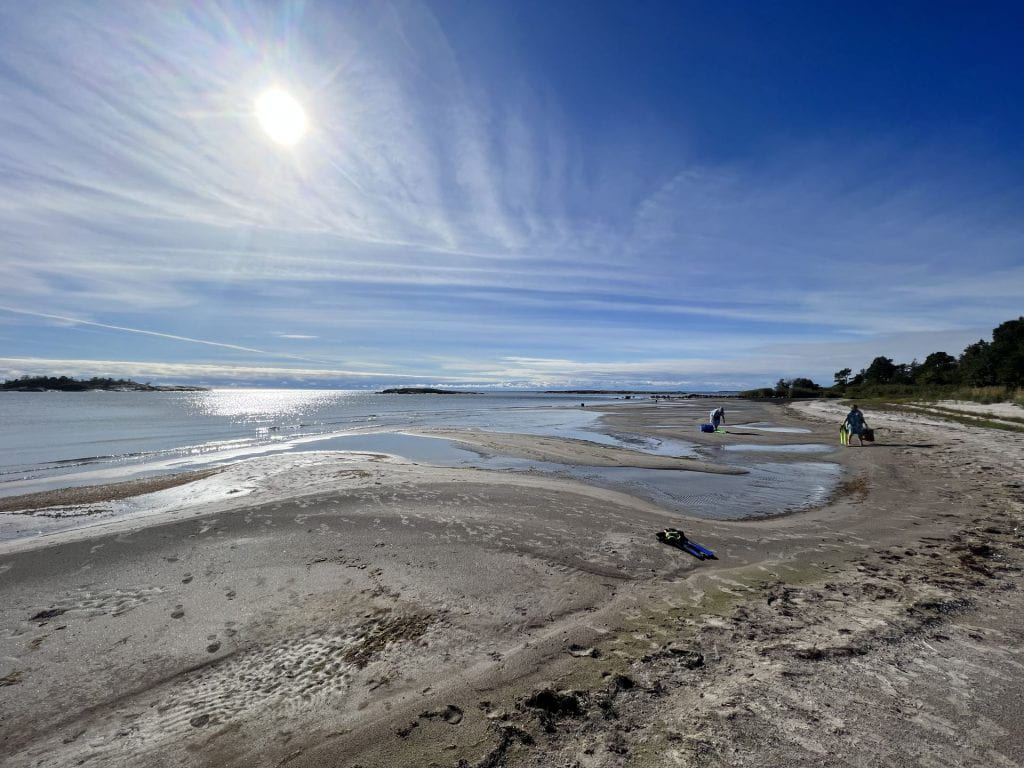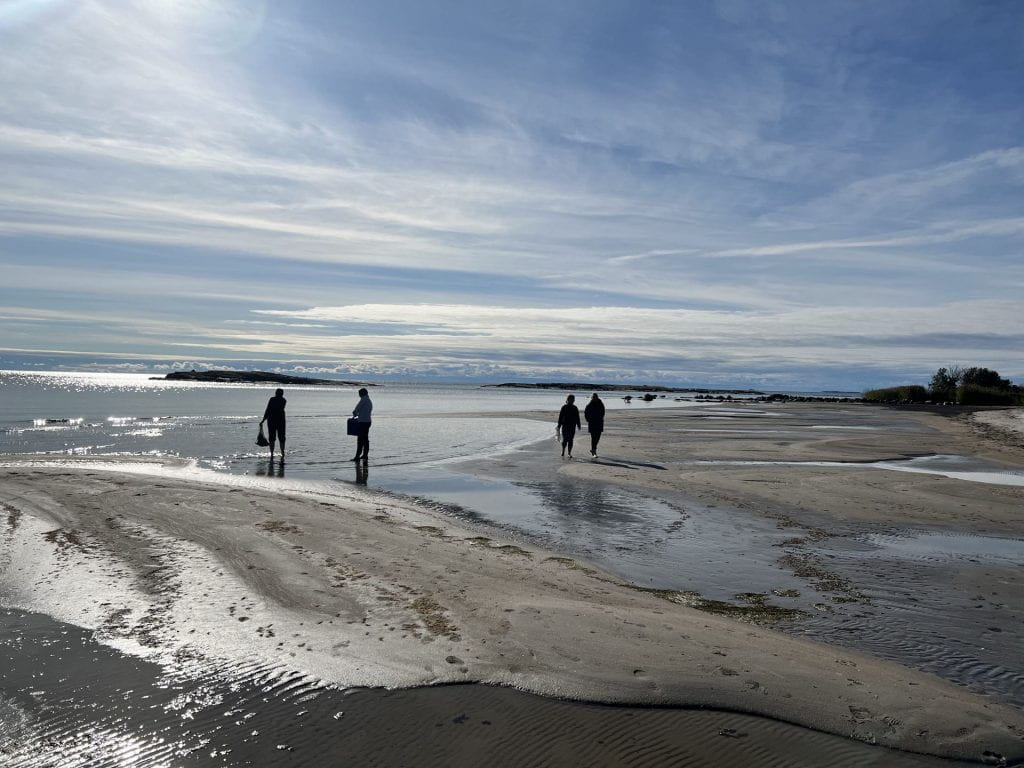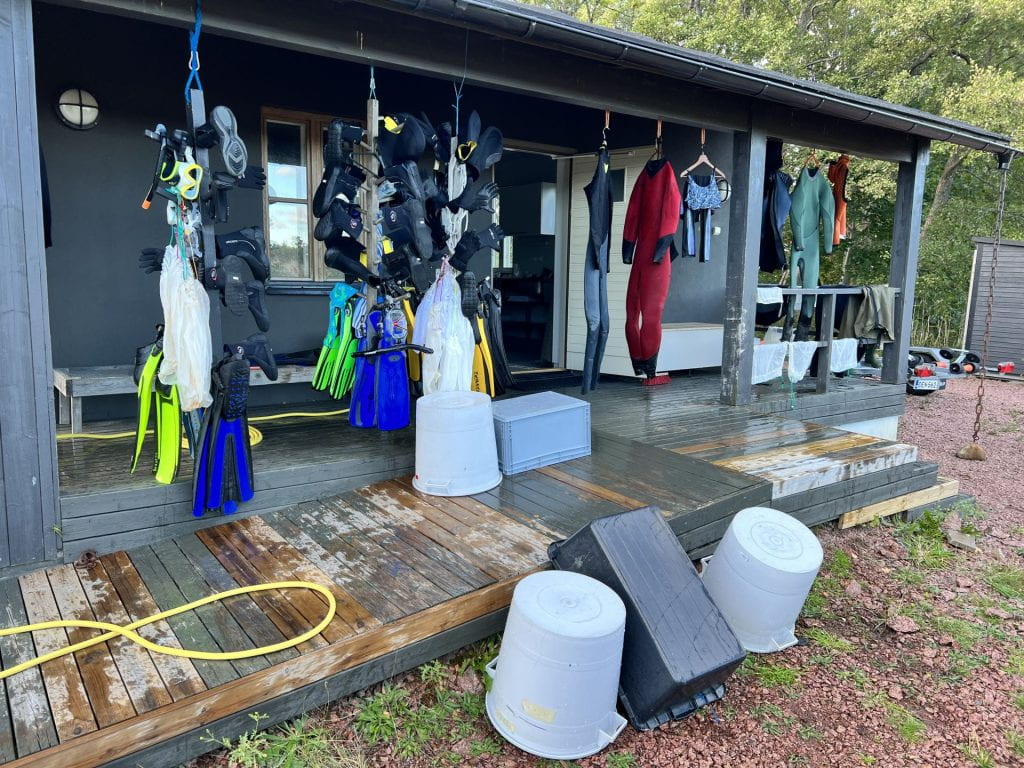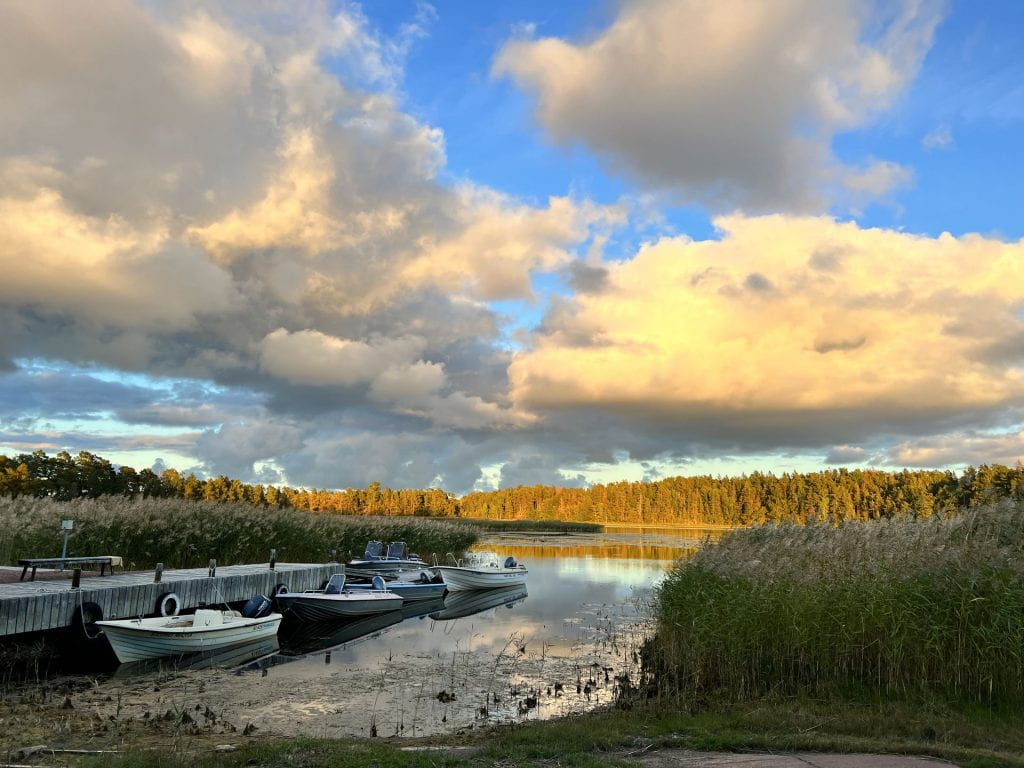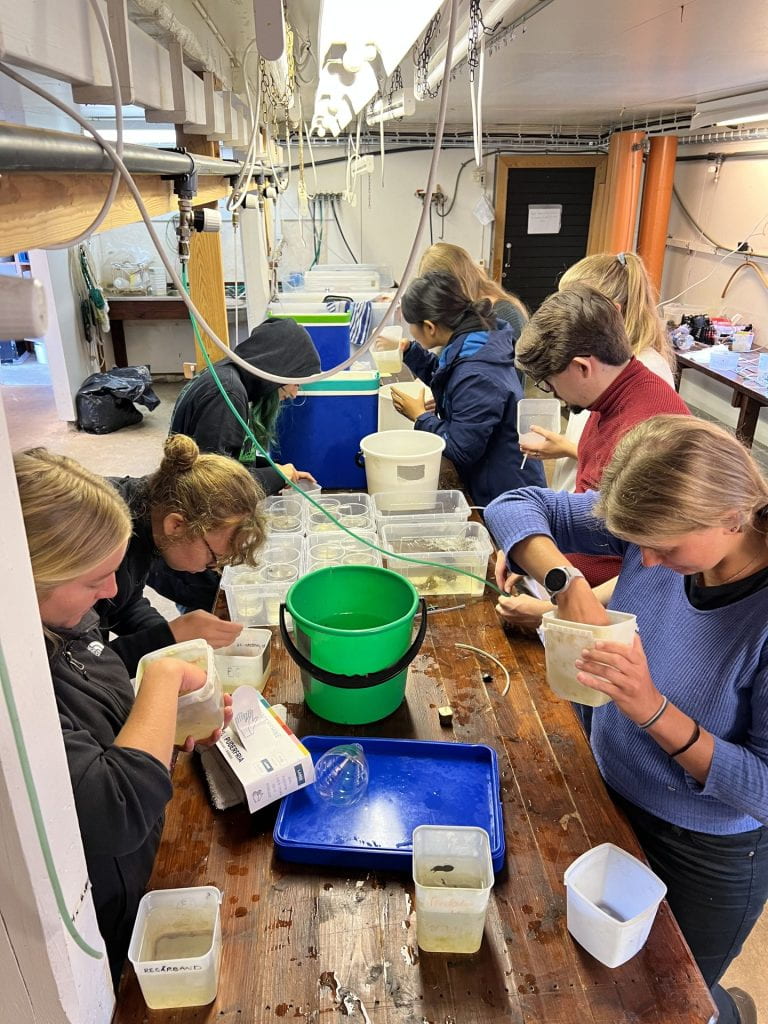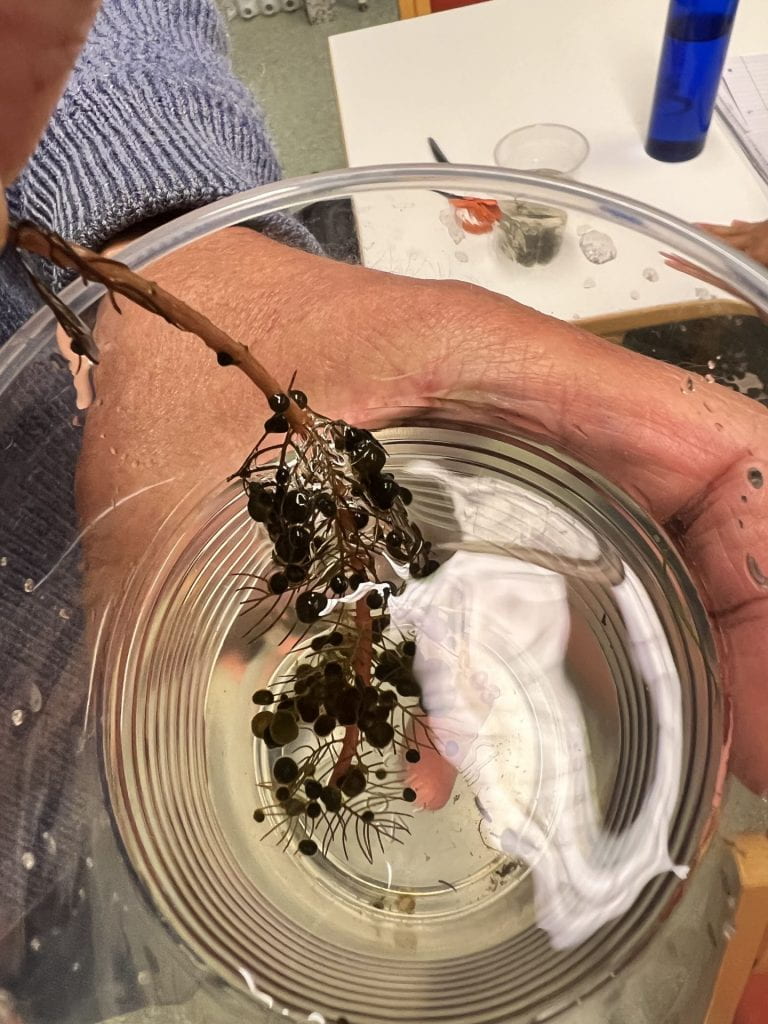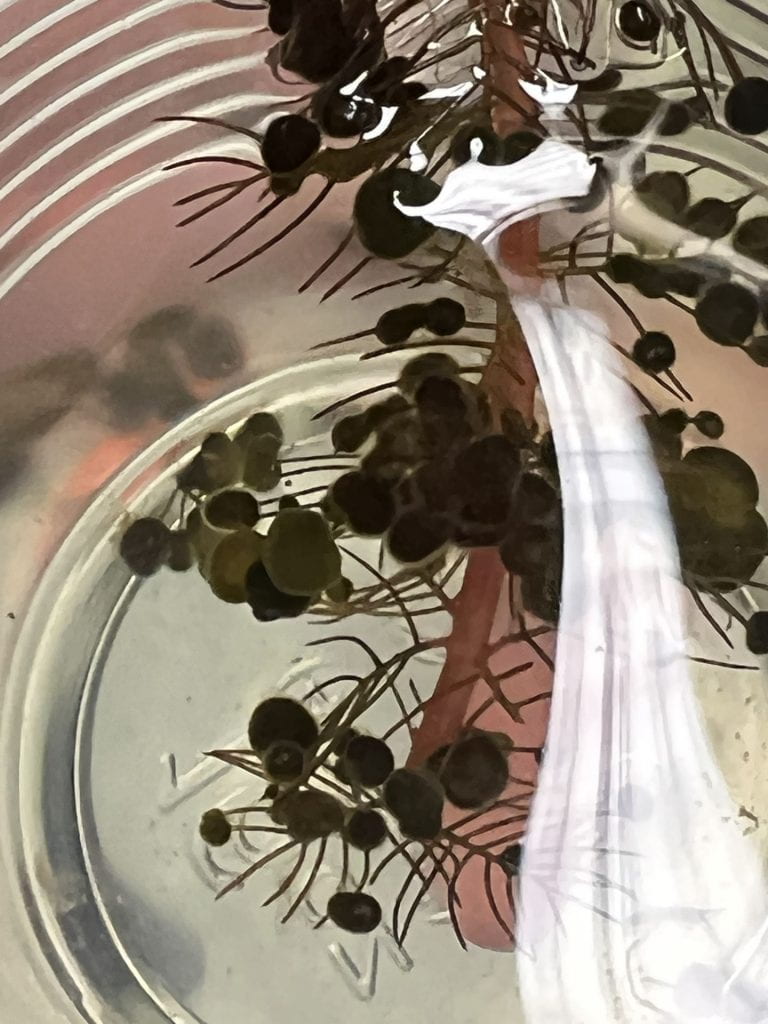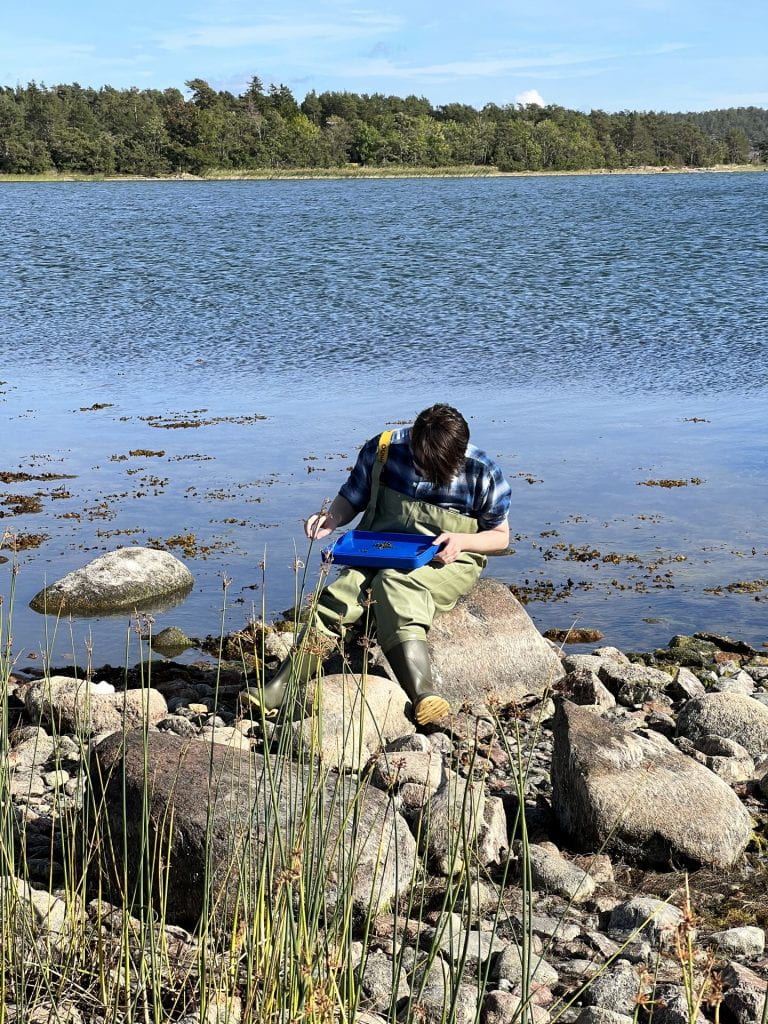…
Month: September 2022
Third field trip to Torsholm island
This was a fantastic day out into the Archipelago, the photos will tell.
Day 5 …
… started with more PAM measurements on seagrass in experiment 1 and we checked the feeding assay of experiment 2.
Day 4 – setting up experiment 2
The day started with preparations of food pellets, pellets over pellets.
We continued with starting the feeding assays of experiment 2, which focuses on testing the influence of different extracts taken from Zostera marina on the palatability of pellets to the grazer Idotea balthica.
Day 3 – getting into the experiments
We started the day with a beautiful morning to be seen from Husö Biological Station’s pier.
After checking the first test feeding assays, we set up the first day, we prepared the first experiment of the course, treating the seagrass Zostera marina with Oligobetaglucan, potentially inducing its chemical defence system towards grazing. In order to test the response of the seagrass to the treatment, PAM measurements were conducted, looking into this plant’s photosynthetic activity.
We learned about the PAM principles and measurements in additional lectures, and by applying the PAM on the seagrass in daily measurements.
Afternoon excursion to Hinder-Bengts Viken
This fabulous beach welcomed us with excellent weather. Inviting for a snorkelling experience in seagrass meadows, adjacent Fucus belts and a lot of fauna living within and on the vegetation.
We collected seagrass (the eelgrass Zostera marina) to be used in our lab experiments later at Husö Biological Station.
After cleaning all gear, the day ended with a fabulous sunset.

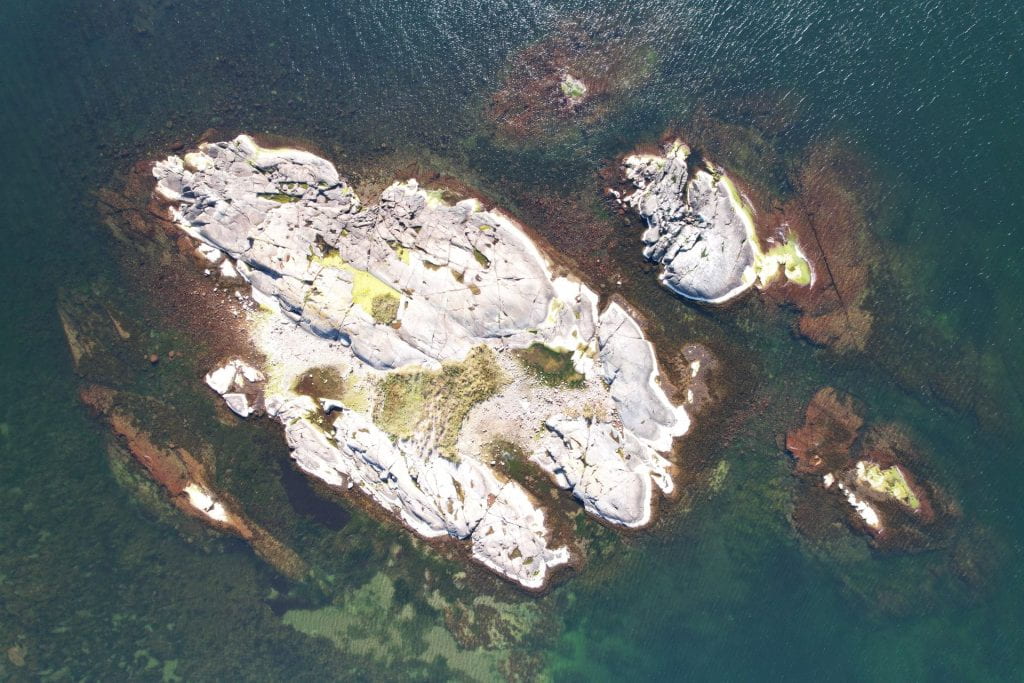
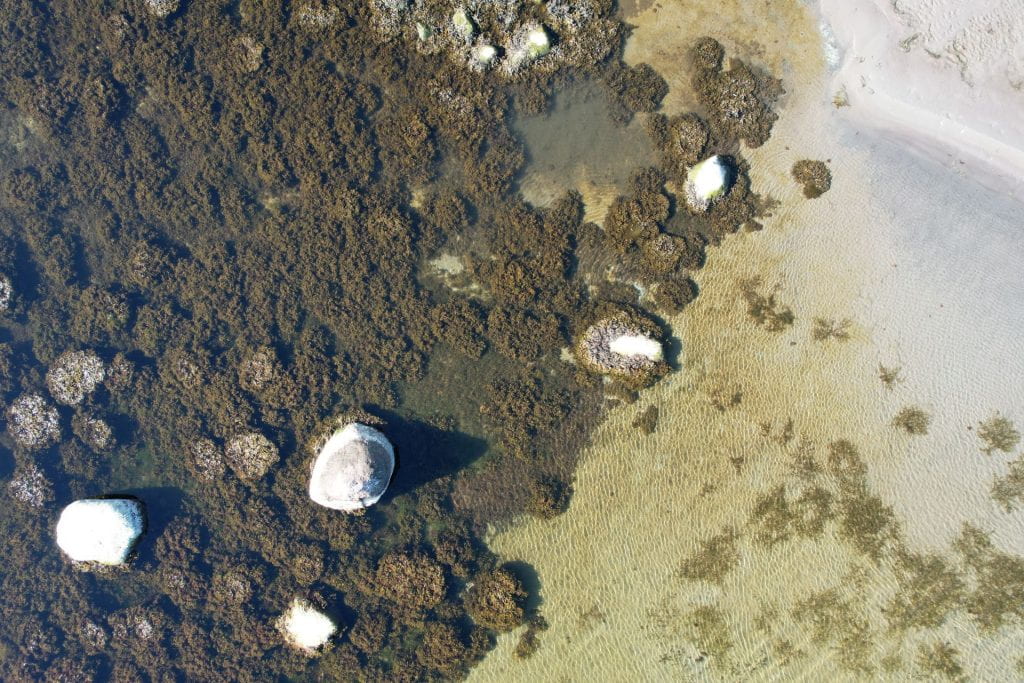

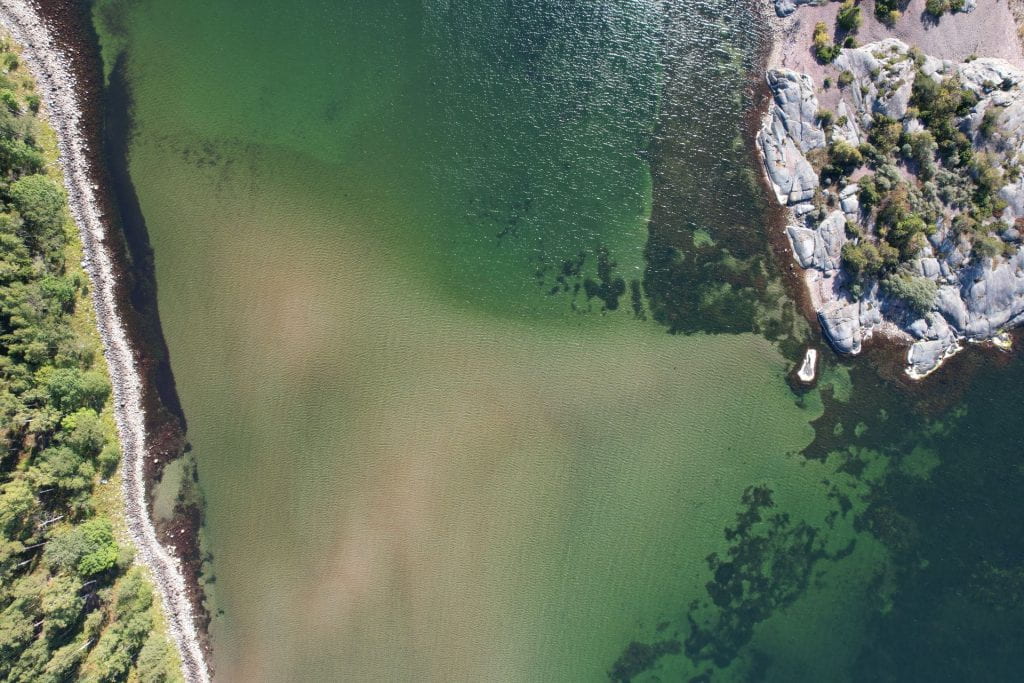
Day 2 – morning session
On this second day of the course, we had to take care of the many grazers we sampled. We identified more than 15 invertebrate species from which we collected all isopod grazers for our feeding assays.
In addition, we have set up some first feeding assays with isopods and amphipods let to feed on produced food pellets.
As experienced on the first day, the water level remained exceptionally low in the bay.
What we found growing on Myriophyllum …
… seems to be colonies of Rivularia sp. (cyanobacteria), of which usually lots can be found in the autumn!

Evening session
Thank you Florian for presenting the entire research topic to all of us, providing a good overview of the field of chemical defences in marine macrophytes and detailed information on the ideas of the planned project and its research questions. More to come …
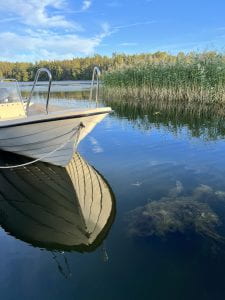
Afternoon excursion to Äppelö
Besides getting a picture of the Åland Archipelago area, we have collected grazers to be used for the planned feeding experiments on seagrass leaves and pellets (more to come). In addition, we collected >15 species living within and around the alga Fucus vesiculosus that we will sort and identify later in the lab.


